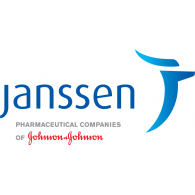
Janssen Pharmaceutica, NV has announced that the pivotal phase 3 AMBER study achieved its primary endpoint, which focused on virologic response rate, and demonstrated that the investigational single-tablet regimen (STR) containing darunavir 800 mg, cobicistat 150 mg, emtricitabine 200 mg and tenofovir alafenamide 10 mg (D/C/F/TAF) was non-inferior to darunavir/cobicistat (D/C) plus emtricitabine and tenofovir disoproxil fumarate (F/TDF) in previously untreated human immunodeficiency virus type 1 (HIV-1) positive adults. The results will be presented on October 27 at the 16th European AIDS Conference in Milan, Italy.
"The 48-week AMBER study results further build on the growing clinical data set that demonstrates the safety and efficacy of darunavir in a once-daily, single-pill dosing regimen," said Joseph Eron, MD, professor of medicine and director, Clinical Core, University of North Carolina Center for AIDS Research, Chapel Hill, N.C.
AMBER is a phase 3 randomized, double-blind, active-controlled, international, multi-center, non-inferiority study designed to assess the safety and efficacy of D/C/F/TAF versus the control in HIV-1 treatment-naïve patients. The control was comprised of two separate medications – D/C plus F/TDF – and patients were randomly assigned (362 D/C/F/TAF; 363 control). The primary endpoint was non-inferiority of the STR versus the control regarding the proportion of patients that achieved viral suppression (viral load [VL] of less than 50 copies per mL at 48 weeks – per FDA Snapshot analysis). Reaching suppression of viral load (or the amount of HIV virus in the blood) is a key treatment goal for people living with HIV.
Overall, the AMBER study met the primary endpoint, and D/C/F/TAF demonstrated non-inferiority versus the control group at 48 weeks (HIV RNA <50 c/mL 91.4% vs 88.4% respectively, difference 2.7%; 95% CI: -1.6% to 7.1%) and also resulted in low virologic failure (VF) rates (VL=50 c/mL; FDA Snapshot: 4.4% [16/362] versus 3.3% [12/363]). There were no observed resistance associated mutations (RAMs) to darunavir or TAF/TDF through 48 weeks.
D/C/F/TAF showed more favorable bone and renal safety parameters versus control. Statistically significant differences were observed in mean changes from baseline to Week 48 in bone mineral density (BMD) between D/C/F/TAF and control (spine -0.7% vs -2.4%, p=0.004; hip 0.2% vs -2.7%, p<0.0001). Differences favoring D/C/F/TAF were also observed in multiple tests of renal laboratory parameters at Week 48, which included quantitative measures of proteinuria, as determined by mean changes from baseline in ratios of total urinary protein (D/C/F/TAF -22.42 mg/g versus control -10.34 mg/g; p=0.033), albumin (-2.45 mg/g versus -0.58 mg/g; p=0.003), retinol binding protein (16.84 µg/g versus 401.12 µg/g; p<0.0001) and ß2-microglobulin (-100.58 µg/g versus 837.63 µg/g; p<0.0001) to urine creatinine.
Similar results were also demonstrated in safety versus control through 48 weeks in terms of rates of discontinuations due to adverse events (AEs – 1.9% D/C/F/TAF vs. 4.4% control), of Grade 3-4 AEs (5.2% vs 6.1%), and of serious AEs (4.7% vs. 5.8%). The most common study drug-related AEs through week 48 were diarrhea (9% vs. 11%), rash (6% vs 4%) and nausea (6% vs 10%).
"The 48-week AMBER results demonstrated that if approved in the US, the investigational darunavir-based STR – combining the durability and high genetic barrier to resistance of darunavir with the safety profile of TAF – could provide a complete and simplified regimen for treatment-naïve patients who may struggle with adherence, and in turn face the risk of developing drug resistance," said Rick Nettles, MD, vice president, Medical Affairs, Janssen Infectious Diseases.
In the US, D/C/F/TAF is an investigational product. A new drug application (NDA) was filed on September 22, 2017 with the US Food and Drug Administration (FDA). The NDA was filed for the treatment of HIV-1 infection in adults and pediatric patients 12 years of age and older and was based on the results from two pivotal phase 3 studies, EMERALD and AMBER.
On September 25, 2017, the European Commission approved the use of SYMTUZA (darunavir/cobicistat/emtricitabine/tenofovir alafenamide [D/C/F/TAF]) for the treatment of HIV-1 infection in adults and adolescents aged 12 years and older with body weight of at least 40 kg. This approval allows Janssen to market D/C/F/TAF in all member states of the European Union and the European Economic Area.
Janssen\'s, arunavir-based single-tablet, regimen meets primary endpoint